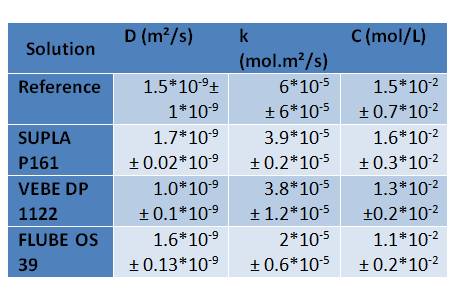|
Introduction
Cement is a material that everyone knows and is called to use. However, an obstacle can fail everything: a too short cement setting time. To overcome this problem, the industry blends additives during the cement dissolution. However, do these additives operate only during the dissolution phase? The Light and Matter Institute has already answered this question for gypsum plaster therefore it was required to perform the same work on cement.
Experimental conditions
Holographic interferometry, a specific analytical method allowed to realize the work. For this reason, experiments were conducted in a dark room. A monochromatic laser whose wavelength was λ=523 nm (green) was used. To avoid mechanical perturbations, the data processing took place in a room located next to the laboratory.
Finally, to be in proper condition uses, the solvent needed to be basic. That is why the solvent Water + sodium hydroxide; 0.1 mol/L (pH = 13) was used.
Results
The value of three parameters was compared to determine the effect of the additives:
- D: diffusion coefficient (m²/s)
- k: dissolution rate constant (mol.m²/s)
- C: saturating concentration (mol/L)
The value of those three parameters are saved both for the reference and the additives. Then, each additive is collated with the reference. The following list can be obtained (see Figure 1).
These results show that the value of parameter k is generally lower than the reference value (noticed that the uncertainty of k reference value is very strong and so maybe wrong). However, the value of the saturating concentration and the diffusion coefficient seem to fluctuate. In fact, if the uncertainties are taken into account, there are no fluctuations and all the results for D and C are constant.
Conclusion
The additives have an impact on the cement dissolution. Indeed, when they are present in solutions, the values of parameter k is lower. Thus, it slows down the dissolution and so increases the time of cement setting. However, the gap between the value of the reference and the values of the additives are not so important as it can be expected. So then, the additives might not act only on the cement dissolution but rather on the precipitation phase which is another phase of the cement hydration.
|
|

Results Summary for reference and additives.
|



